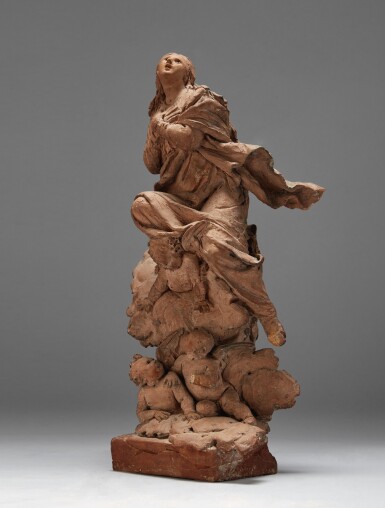
South German or Bohemian, circa 1700
Assumption of the Virgin
Auction Closed
January 29, 04:53 PM GMT
Estimate
10,000 - 15,000 USD
Lot Details
Description
South German or Bohemian
circa 1700
Assumption of the Virgin
terracotta
height 12 ⅝ in.; 32 cm.
From whom acquired, 2013.
"[M]odelling in clay is to the sculptor what drawing on paper is to the painter...[In] the soft material, and on paper, the genius of the artist is seen in its utmost purity and truth..."1-Johann Joachim Winckelmann, The History of Ancient Art, 1764
Small terracotta sketches or bozzetti have become increasingly popular with collectors as the in-depth study of sculpture has expanded through the decades. Evidence of rapidly moving hands and the presence of tool marks and fingerprints provide the viewer with a connection to the artist’s working methods and thought process. Furthermore, the tactile quality of the material, whether the piece is a preparatory model or a finished sculpture, compels close examination and great appreciation.
The composition of the present dynamic terracotta sketch recalls the elaborate Rococo decoration in Northern Europe, particularly in Southern Germany in the 18th century. Churches were filled with wood and stucco carvings of saints and angels miraculously floating above the heads of the congregation. Larger elements, such as images of the Madonna, had to be carefully worked out with the use of preliminary sketches by the sculptor so that the figures appeared to rise effortlessly within the church architecture.
The mass of clouds and the Virgin's animated body suggest that this sculpture was a sketch for a monumental composition for a Rococo church, placed at considerable height where she could be adored but not accessible.
1 Johann Joachim Winckelmann, The History of Ancient Art, 1764, trans. G. Henry Lodge, Boston 1880, vo. I, p. 144
